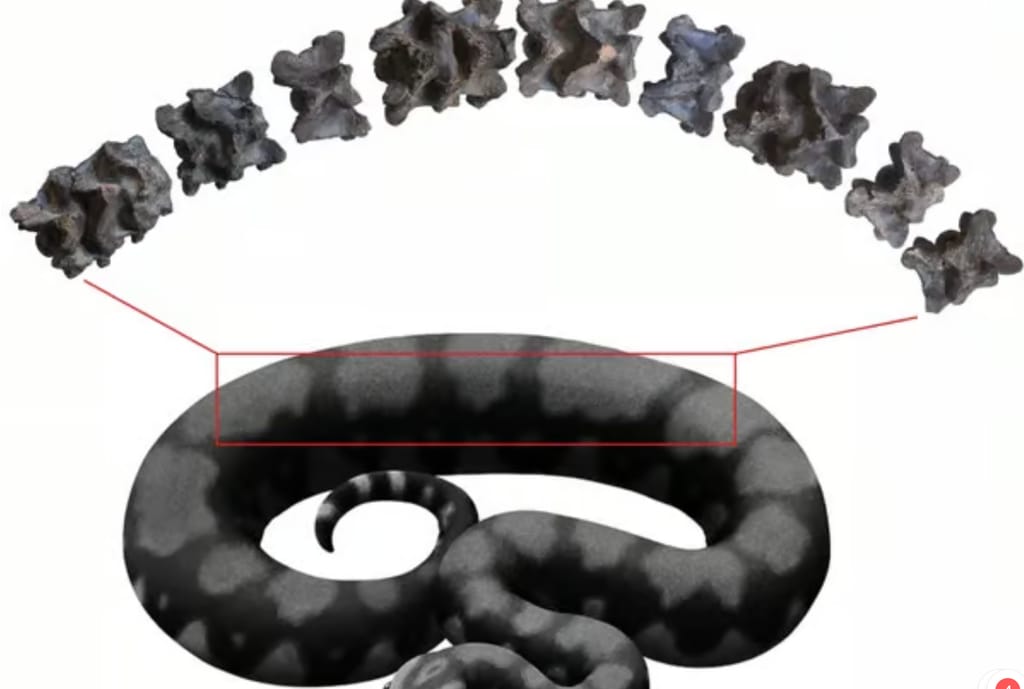
A colossal snake fossil discovered in a mine in Gujarat state, western India, is one of the largest snakes ever discovered. This huge snake, named Vasuki indicus, is estimated to have measured up to 15 meters in length, surpassing even the size of a T-Rex.
Scientists found 27 vertebrae, some still in their original position within the spine. They speculate that Vasuki likely resembled a massive python and did not possess venom. The lignite mine where the fossil was unearthed is situated in Panandhro, Gujarat.
The snake could have weighed up to 2,200 pounds
Debajit Datta, a postdoctoral researcher in paleontology at the Indian Institute of Technology (IIT) Roorkee and the lead author of the study, said, “Considering its huge size, Vasuki was a slow-moving predator that would control its prey through constriction like anacondas and pythons. This snake lived in a marshy swamp near the coast at a time when global temperatures were higher than today.”
The snake could have weighed up to 2,200 pounds (1,000 kilograms), as stated in the journal Scientific Reports.
The name Vasuki was chosen in reference to the mythical snake king Vasuki, often depicted coiled around the neck of the Hindu god Lord Shiva.
Remains of the snake’s backbone were initially discovered in 2005 by co-author Sunil Bajpai from the same institute, near Kutch, Gujarat.
Researchers compared over 20 fossil vertebrae to the skeletons of living snakes to estimate Vasuki’s size.
“The estimated body length of Vasuki is comparable to that of Titanoboa (another huge prehistoric snake), although the vertebrae of Titanoboa are slightly larger than those of Vasuki. However, at this point, we cannot say if Vasuki was more massive or slender compared to Titanoboa,” said Sunil Bajpai.
Titanoboa, believed to be around 13 meters long and weighing over 1 tonne, lived between 58 and 60 million years ago.
Describing Vasuki, palaeontologist Debajit Datta said, “Vasuki was a majestic giant. It might have spent most days peacefully resting its head on a high porch formed by its own massive coil, or perhaps moved sluggishly through the swamp.”
The mystery of Vasuki’s diet remains. Given its size, it could have preyed on crocodiles. Interestingly, crocodile and turtle fossils were found alongside Vasuki’s remains, along with fish and even two primitive whales – Kutchicetus and Andrewsiphius.
“Snakes are amazing creatures that often leave us stunned because of their size, agility, and deadliness,” Datta said.
